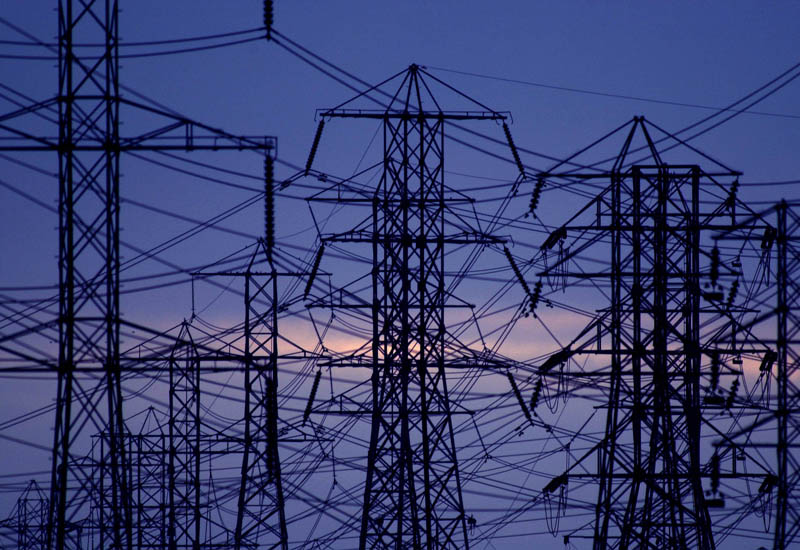- N6bn Power Transmission Projects Stalled Amid Funding Challenge
Power transmission projects worth about N6bn have remained stalled in the past few years due to lack of government funding, even as the nation seeks to achieve incremental power supply.
The nation’s power generation and distribution companies were privatised in November 2013, but the transmission segment of the value chain was left in the hands of the government.
Since 2002, a total of 130 projects across the country had yet to be completed, the Managing Director, Transmission Company of Nigeria, Dr. Atiku Abubakar, said at a forum held by Eko Electricity Distribution Company Plc in Lagos, with members of the House of Representatives’ Committee on Power in attendance.
He said the nation’s power grid continued to experience collapse as a result of low spinning reserve.
Abubakar said, “In the TCN, we have over 130 big projects, from 330KV to 132KV to associated substations, from 2002. But they have not been completed due to lack of funding from government. For three years’ budgets now, nothing has been allocated for the projects.
“Year in year out, we made provisions for the projects in the budget, but they were removed for reasons we don’t know. In 2015, the power sector had only N1bn allocation; and these projects are worth N5bn to N6bn. They are over 60 to 70 per cent completed; we have all the materials on the ground.”
He said the contractors could not continue the project because payment had not been made, adding, “We hope this year, we will be able to fund the projects so that they will be completed within one year or one and a half years.”
The TCN MD noted that the issue of gas constraints had worsened power supply in the country.
He said, “Principally, that (gas shortage) is what is drawing us back. If you recall in February, we reached 5,074 megawatts, which was the highest ever generated in Nigeria. But now, we are hovering between 3,000MW and 3,200MW.
“We are hopeful that the situation will improve and we will get improvement in generation. Once we are generating anything below 3,000MW, nobody can guarantee the grid stability. That is, system collapse is bound to happen.
He decried the lack of adequate spinning reserve to forestall system collapse, saying, “Sometimes we have 15MW, 20MW and 36MW as spinning reserve. So if you lose 300MW, what can that do in order to quickly rise up and protect the system; you will lose the system. So, that is the issue. But we are trying as much as possible to avoid system collapse.”
The Managing Director, EKEDC, Mr. Oladele Amoda, said when the private investors came in after the privatisation of the sector, power generation was around 3,000MW, adding, “Our demand in Eko is between 700MW and 1,000MW. The best we have got was 500MW, and that was around February.”
He said the gas pipeline vandalism was militating against the drive for incremental power.
Noting that the sector had suffered huge neglect before the privatisation, Amoda said more than 70 per cent of their customers did not have functional meters and the situation was not peculiar to the EKEDC.
He said, “The investors put measures in place to rehabilitate and upgrade the assets. We went to the banks to get loans so as to sustain the network. We purchased a lot of transformers and provided meters to many of our customers.”
The Chairman, House of Representatives Committee on Power, Mr. Dan Asuquo, said, “One thing I think my colleagues and I are taking back is the level of enlightenment and concern, which Nigerians have shown to get better quality service for what they pay for. I think we have an increased agitation for better service for what they pay for.”
He said the committee was monitoring the performance of the power firms to ensure Nigerians were not exploited in any way and to get value for their money.
He noted that the power sector had been denied measurable investment in the last 30 years, saying, “The decay is very much.”


 Billionaire Watch3 weeks ago
Billionaire Watch3 weeks ago
 Startups4 weeks ago
Startups4 weeks ago
 News4 weeks ago
News4 weeks ago
 News4 weeks ago
News4 weeks ago
 Bitcoin4 weeks ago
Bitcoin4 weeks ago
 Naira4 weeks ago
Naira4 weeks ago
 Forex3 weeks ago
Forex3 weeks ago
 Treasury Bills4 weeks ago
Treasury Bills4 weeks ago
























